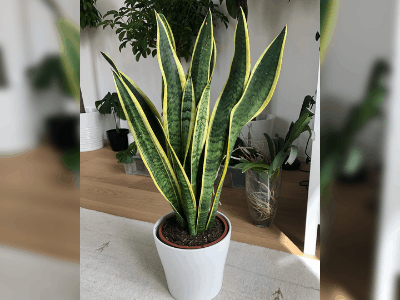
Sansevieria or (san-se-vi-ah) in the Lily family, also known as one of the world’s most popular plants.
On the basis of molecular phylogenetic studies, Sansevieria has been included in the genus Dracaena…
…which is native to tropical Africa in particular, Madagascar, and southern Asia.
The 70 or so species formerly placed in the genus have been known by many common names…
…including mother-in-law’s tongue, devil’s tongue, jinn’s tongue, bow string hemp, snake plant, and snake tongue.
According to the APG III classification system, Dracaena is a member of the family Asparagacea…
…subfamily Nolinoideae (formerly the family Ruscaceae).
It has also been placed in the family Dracaenaceae.
With its durability, the Sansevieria makes an excellent choice for apartment dwellers…
…who typically have difficulty with houseplants due to limited lighting.
They should take a good look at snake plants. As the most tolerant of all decorative plants…
….Sansevieria can survive the harshest growing conditions, abuse and neglect.
Simply put, sansevieria is a tough houseplant to kill. Snake plants are versatile…
…classic houseplants with sword-like foliage.
The great thing about this plant is that it’s a great plant for forgetful gardeners and it’s an excellent air purifier plant for indoor environments.
Despite being a resilient succulent that can grow from 6 inches to several feet, snake plants have a number of health benefits.
Household plants are often strategically placed for decoration and to maintain good feng shui.
But did you know that some of these same plants also have some health benefits?
You might be surprised to learn that snake plants bring both health benefits and beauty to your home.
Keep reading to discover the snake plant’s benefits, how to care for one, and how to keep it alive.
Sansevieria trifasciata is low-maintenance and tolerant of neglect.
A snake plant growing in tropical West Africa flourishes best when given acidic soil with a pH value between 4.5 and 7.0.
Here we have Sam story about his experience taking care his bad shape snake plant until its have a good healthy sign.
Let us hear Sam’s story
I was given a snake plant for my birthday. I love this thing, it’s so easy to care for and I have never killed one yet!
It’s also helped me get over being afraid of snakes because the only time I ever see them…
…is when they come up in one of these plants. But It comes in very very bad shape.
I feel pity for him. “I don’t want to loose this little guy” I said it loudly in my heart.
In a minute, I look up into the internet and having some research about this plant…
…for how to do it and how to take care of it until it have a good sign of healthy snake plant.
I am a perfectionist so I need to keeping this plant alive and not gonna loose this little guy.
After all I have done and been through, in 2 weeks finally this plant having a good sign as a healthy plant!
Man, it was hardest day for 2 weeks, but its all now worth.
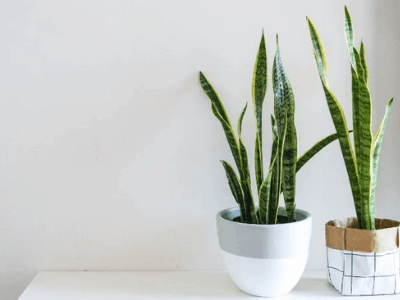
A healthy snake plant has pump, fleshy green leaves.
Lidia Ryan, writer at Lonny.com
Here’s the main things that you should know!
Why Choosing this plant? Is it worth?
Well, this plant is one of the famous houseplant that you will ever had.
Recognizable and easy to care! Isnt that great?
The snake plant is native to Africa’s tropical western region, from Nigeria to Congo..
…where she goes by the scientific name Sansevieria trifasciata; however, she goes by a variety of other names.
She is most recognized as “snake plant,” or “mother-in-law’s tongue” because of the shape and the sharpness of her leaves.
In Brazil, they call her “Espada de São Jorge,” because she is associated with the sword of Saint George, and in Japan, they call her “Tiger’s tail.”
Like all famous people, the snake plant suffered criticism.
She was associated with bad luck. This is just a rumor.
In fact, the plant was cherished in ancient times and was believed to bring good luck in several countries.
In China, people who possessed this plant were subject to receiving eight virtue gifts…
from the Eight Gods, which includes Prosperity, Beauty, Long Life, Intelligence, Health, Art, Strength, and Poetry.
This plant will attract positive energy and good luck to your home…
…giving you a feeling of well-being and a feeling of security.
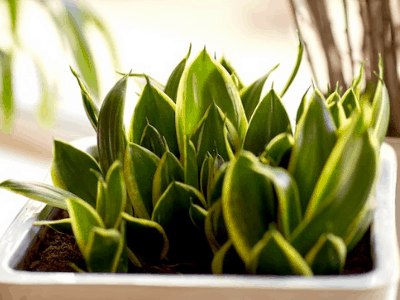
Go on…
Healthy Snake Plant!
It is important to examine the leaves and the base of the snake plant when shopping for one to make sure it is healthy.
A healthy snake plant has pump, fleshy leaves. Wrinkles in the leaves could indicate the snake plant has root rot…
….in which case it has been overwatered to the point that the roots have been damaged.
It is a tough issue to repair, so continue scouting.
Because healthy snake plants have stiff leaves, the stem may be mushy.
Dry soil in the pot may also indicate root rot. The spring and summer can be followed by healthy growth.
Look for small light green leaves poking through the surface.
This hardy indoor plant is robust and structural making it ideal for someone looking….
…for a low-maintenance yet stylish addition to their home or office.
Get to know all about the benefits of the Snake Plant and how to care for and grow this attractive houseplant.
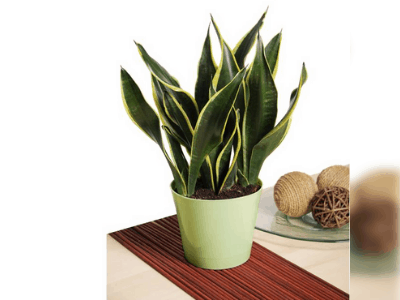
Here’s the thing…
How to Care for and Grow Your Snake Plant
So from this section I will give you the guide for you, so you will know how to care and grow your snake plant properly:
Light For Healthy Snake Plant
Snake Plants don’t have high light requirements. Bright indirect light is ideal, but they also do well in low light as well as direct sun.
Water For Healthy Snake Plant
The top soil should be watered once every ten days to two weeks, or whenever it is completely dry.
Don’t water too much. A long watering can will help you water your snake plant like you meant to.
Growth For Healthy Snake Plant
A number of plants come to mind when looking for plants for your brown thumb.
One of these plants is the Sansevieria, the snake plant.
The snake plant is a good candidate for “plant grim reaper,” however…
…you may wonder how quickly the snake plant forms a solid root system.
The Growth Rate of Snake Plants
Snake plants grow slowly when exposed to moderate light, either indoors or outdoors.
In the meantime it tends to grow enough, as long as the sun is shining.
The size and shape of your Sansevieria will be determined by the variety that you have planted as well…
…as the growing conditions.
Next thing that you should know!
Some Problems That Faced
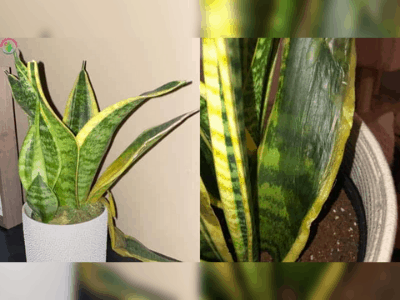
Leaves curling or falling over
Curling leaves on a Snake Plant could mean one of several things.
You should first diagnose the problem. Snake plants can be plagued by thrips, a tiny black insect that infests…
…and eventually kills them. Shaking your plant on top of a white piece of paper can tell you if it has thrips.
If any black bugs fall off your plant, it is possible that your plant has thrips. Don’t worry though! Just relax!
Grasp any leaves clearly damaged with a sharp blade and wipe with a clean cloth…
…then spray plenty of water onto the plant.
Follow this by spraying your plants with neem oil a few times a week for one month.
Is there no sign of bugs? Do you need to check if your plant is not overly watered or under watered.
Dry brown tips
It is most likely caused by infrequent or sporadic watering if you see dry, brown tips on your Snake Plant.
Despite the fact that the Snake Plant can withstand long drought periods, it still likes to be watered regularly!
Soggy or mushy leaves
Snake Plants with soggy, mushy or wilted leaves are most likely the result of overwatering or root rot.
Make sure your Snake Plant is only watered when the soil is dry.
Once every ten to two weeks should be okay. If your plant is wilting, it might need to be discarded and replaced.
If moisture is detected in the soil, it may be a case of root rot.
Last but not least
Snake Plant not growing
Is your Snake Plant growing slowly?
That’s okay. Snake Plants typically grow slowly, especially in a low-light environment…
…which is a big reason why many people have chosen this plant.
Be patient! You can fertilize your plant in the spring and summer to boost growth…
…but the plant will grow mostly in the spring and summer.
Sum Up
See having Snake plant is good choice for you to have! It’s cool, its famous, it’s easy to have and care!
What else do you need? In this pandemic time like this, is a good choice for you to have an new activity…
…and having snake plant is a good choice for you to have!
Conclusion
Last thing for sure. This plant need to be care carefully, remember plant need the “love” too.
Alright that’s all for today! Do you have any questions about all of this?
Or do you want to add some method to taking care of snake plant so I have a good healthy sign?
Let me know your recommendation from the comment below.
I hope you can now take care your snake carefully and grow it big!
Thanks for reading this article! Bye!

